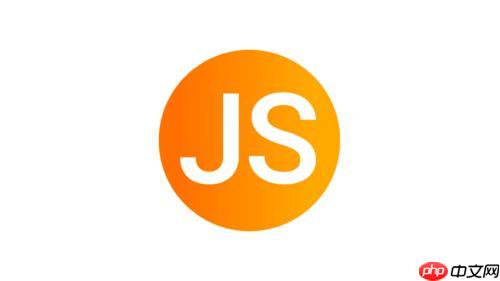最直接判断javascript数组是否为空的方法是使用array.length === 0。1. 使用 length 属性:const myarray = []; if (myarray.length === 0) { console.log("数组是空的。"); } else { console.log("数组不为空。"); },这种方法高效、语义清晰且适用于所有数组创建方式;2. 注意区分变量为 null/undefined 与数组为空的区别,!array 或 array == null 用于判断变量本身是否为空值,而非数组内容是否为空;3. 当数组包含 null、undefined 或为稀疏数组时,length 大于 0 但可能被视为“逻辑上为空”,此时需进阶判断:使用 filter 方法筛选有效元素后检查长度,适用于需获取有效数据的场景;使用 some 方法检查是否存在至少一个有效元素,性能更高,适合存在性验证;使用 every 方法判断是否所有元素均为无效值,适用于确认全数组无效的场景;最终选择取决于对“空”的具体定义,多数情况下 array.length === 0 已足够,复杂需求则结合 filter、some 或 every 实现。

在JavaScript里,判断一个数组是否为空,最直接也最常用的方法就是检查它的
length
array.length
0
判断一个JavaScript数组是否为空,通常我们会这样做:
const myArray = [];
if (myArray.length === 0) {
console.log("数组是空的。");
} else {
console.log("数组不为空。");
}
// 示例:
const emptyArray = [];
const nonEmptyArray = [1, 2, 3];
const anotherEmptyArray = new Array(); // 也是空的
console.log(emptyArray.length === 0); // true
console.log(nonEmptyArray.length === 0); // false
console.log(anotherEmptyArray.length === 0); // true这方法简单、直观,而且性能极佳,因为它只是访问了一个数组的属性,没有额外的计算开销。
array.length
说起来,我个人觉得
array.length
length
0
它的优势在于:
length
array.length === 0
[]
new Array()
Array.from()
...
length
有些时候,你可能会看到一些比较“花哨”的判断方法,比如
!array
array == null
null
undefined
[]
null
undefined
undefined
null
聊到这个,就不得不提一个有点意思的“陷阱”:一个数组的
length
0
undefined
null
比如:
const arrWithNull = [null, undefined, null]; console.log(arrWithNull.length); // 3 const sparseArray = [1, , 3]; // 稀疏数组,第二个元素是空的 console.log(sparseArray.length); // 3 console.log(sparseArray[1]); // undefined
你看,
arrWithNull
length
3
sparseArray
length
3
undefined
在这种情况下,
array.length === 0
如果你的“空”定义是“不包含任何非
null
undefined
length
这里有几种常见的进阶方法:
使用 Array.prototype.filter()
length
const dataArray = [1, null, undefined, 4, 'hello', '', 0]; // 过滤掉所有被认为是“假值”的元素(null, undefined, 0, '', false) const validElements = dataArray.filter(item => item); console.log(validElements.length === 0); // false,因为有1, 4, 'hello' // 如果只关心 null 和 undefined const meaningfulElements = dataArray.filter(item => item !== null && item !== undefined); console.log(meaningfulElements.length === 0); // false
这种方法会创建一个新数组,然后检查新数组的长度。如果原数组很大,这可能会有性能开销,因为需要遍历整个数组并创建新数组。
使用 Array.prototype.some()
some()
const mixedArray = [null, undefined, '', 0]; const hasMeaningfulData = mixedArray.some(item => item !== null && item !== undefined); console.log(hasMeaningfulData); // false const anotherMixedArray = [null, 'data', undefined]; const hasAnyValidData = anotherMixedArray.some(item => item); // 检查是否有“真值” console.log(hasAnyValidData); // true
这个方法的好处是,它只做“存在性”检查,一旦找到就返回,效率很高。
使用 Array.prototype.every()
every()
const allInvalid = [null, undefined, null]; const areAllMeaningless = allInvalid.every(item => item === null || item === undefined); console.log(areAllMeaningless); // true const notAllInvalid = [null, 'data', undefined]; const areAllMeaninglessAgain = notAllInvalid.every(item => item === null || item === undefined); console.log(areAllMeaninglessAgain); // false
这在某些特定场景下非常有用,比如确认一个表单字段数组是不是所有输入都为空。
选择哪种方法,最终还是取决于你对“空”的定义。大多数时候,
array.length === 0
filter
some
every
以上就是js怎么判断数组是否为空的详细内容,更多请关注php中文网其它相关文章!

每个人都需要一台速度更快、更稳定的 PC。随着时间的推移,垃圾文件、旧注册表数据和不必要的后台进程会占用资源并降低性能。幸运的是,许多工具可以让 Windows 保持平稳运行。

Copyright 2014-2025 https://www.php.cn/ All Rights Reserved | php.cn | 湘ICP备2023035733号